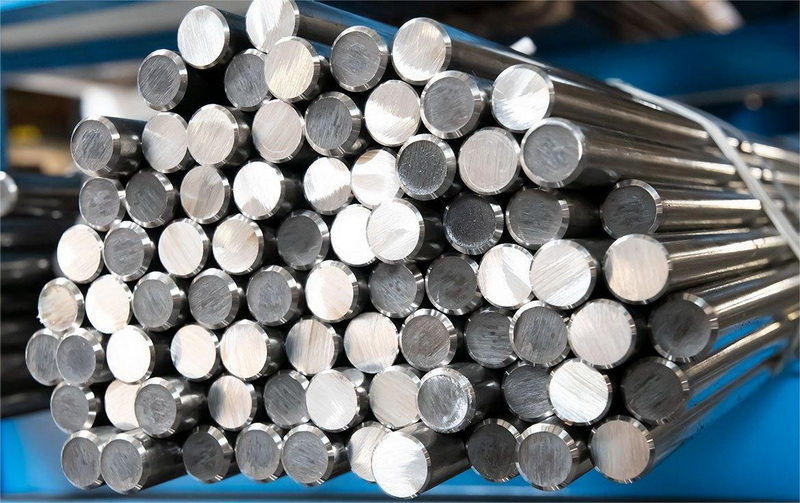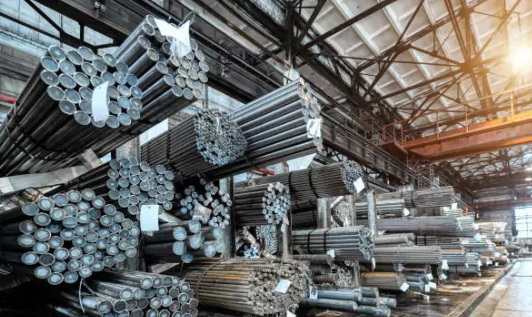English


Views: 222 Author: Tomorrow Publish Time: 2025-07-18 Origin: Site











Content Menu
● What is Stainless Steel Fabrication?
● Pros of CNC Machining for Industrial Use
● Pros of Stainless Steel Fabrication
● Cons of Stainless Steel Fabrication
● CNC Machining Vs Stainless Steel Fabrication: Application Considerations
● Further Considerations: Cost, Speed, and Quality Balance
● FAQ
>> 1. What industries commonly use CNC machining versus stainless steel fabrication?
>> 2. Is CNC machining suitable for large stainless steel parts?
>> 3. How does material waste compare between CNC machining and fabrication?
>> 4. Can CNC machining produce complex shapes that fabrication cannot?
>> 5. Which method offers faster turnaround times?
In the industrial manufacturing world, choosing the right method to create components from stainless steel or other metals is critical. Two prevalent techniques are CNC machining and stainless steel fabrication. Both methods boast unique advantages and disadvantages that impact precision, cost, speed, customization, and material properties. This article explores a detailed comparison to help industry professionals make the best choice for their applications.

CNC machining (Computer Numerical Control machining) is a precision manufacturing process that uses computer programming to control machine tools such as mills, lathes, and routers to cut, drill, or shape raw materials into finished parts. CNC machining excels at producing high-precision components, especially in metals like stainless steel, aluminum, and titanium. It is suited for prototypes, complex geometries, and parts requiring tight tolerances.
The process typically begins with a CAD (Computer-Aided Design) model, which is translated into a program that guides the machine's movements. The controlled cutting tools then methodically remove material from a solid block or billet of stainless steel. The use of advanced tooling materials and lubrication technologies allows machining of even hard grades of stainless steel with minimal thermal effect on the material.
Stainless steel fabrication is a broader manufacturing process that involves cutting, bending, welding, and assembling stainless steel sheets or parts to create finished products. This technique may include manual or automated methods and is often used for making larger assemblies, structures, or components with less stringent precision demands compared to CNC machining.
Fabrication methods include plasma or laser cutting, press braking for bending, and welding techniques such as TIG, MIG, or spot welding to join components. Unlike CNC machining, which subtracts from a solid block, fabrication assembles parts together, making it well suited for large-scale items like tanks, piping systems, frames, or architectural components.
- High Precision and Tight Tolerances: CNC machining, driven by computer control, achieves extremely fine tolerances and consistent repeatability, which is essential for critical parts in aerospace, medical, and electronics industries. This precision ensures parts fit and function perfectly in assemblies.
- Complex Geometries: CNC machines can craft intricate, detailed shapes with multiple curves, holes, and threads that would be difficult or impossible with other fabrication methods. This capability enables the production of complex functional components with interior cavities or fine surface features.
- Material Integrity: Unlike casting or heavy fabrication, CNC machining removes material without altering the metallurgical properties. Therefore, it preserves stainless steel's inherent strength and corrosion resistance, as no welding heat or bending stresses are introduced.
- Speed for Small to Medium Runs: CNC machining setup time is relatively short, enabling fast turnaround times especially for small production batches or prototypes. Changes to design files and rapid adjustments make iterative development efficient.
- Cleaner Finish: CNC machining delivers fine surface finishes, reducing or eliminating the need for additional finishing processes such as sanding or polishing. This is advantageous when aesthetics or smoothness are important to function.
- Automation and Consistency: The computer-controlled nature of CNC machining allows for automated production with minimal manual intervention, reducing human error and ensuring consistent quality across high volumes.
- Cost for Large Production: For very large runs, CNC machining can be more expensive than fabrication or casting due to longer machining time and tooling wear. The cost per part decreases with volume to a point but may not compete with economies of scale in fabrication.
- Material Waste: CNC machining is a subtractive process, generating chips and scrap as excess material is removed. This can be costly, especially with expensive stainless steel alloys.
- Limitations on Size: The size of parts is limited by the CNC machine's working envelope, restricting fabrication of very large components in a single piece. Large assemblies may require machining multiple parts followed by welding or fitting.
- Tool Wear and Machine Maintenance: Machining hard metals like stainless steel quickly wears tools and requires experienced operators and regular maintenance to avoid downtime and maintain precision.
- Setup Complexity for Certain Shapes: Some shapes may require multi-axis or complex machining setups which increase programming time and machine use.
- Cost-effective for Larger Products: Fabrication methods like welding and bending are often faster and cheaper for large or simple structural components where extreme precision is not required.
- Flexibility in Size and Shape: Fabrication can handle very large assemblies and structural frames beyond CNC machine sizes. There is practically no upper size limit, making it ideal for custom industrial installations like boilers, tanks, and heavy equipment frames.
- Material Efficiency: Fabrication can minimize waste by using sheet metal and assembling parts rather than removing excess material. Sheet stock utilization is generally high, reducing overall material costs.
- Ease of Modifications: Fabricated structures are easier to modify or repair by cutting and welding compared to remachining. This makes fabrication suitable for iterative design improvements or on-site adjustments.
- Robustness in Joining: Advances in welding techniques allow creation of structurally strong joints for high-stress industrial applications.
- Simple Tooling Requirements: Fabrication tooling like press brakes and welding equipment tend to be less expensive and easier to set up than CNC machines.

- Less Precision: Fabricated parts typically have looser tolerances, which may require additional machining or grinding for precision applications. Dimensional accuracy depends heavily on welder skill and consistency.
- Surface Finish: Welding and mechanical joining often leave surface imperfections such as weld beads, heat discoloration, or distortion that need further finishing.
- Labor-Intensive: Fabrication can be more dependent on manual labor and skilled welders, which can increase costs and variability in quality. Labor skill greatly influences final product quality.
- Structural Integrity Risks: Welding and bending introduce stress and heat-affected zones that may alter the metal's microstructure and cause weaknesses such as warping, cracking, or reduced corrosion resistance.
- Design Limitations: Complex internal features or very detailed shapes that CNC can produce may be challenging or impossible solely through fabrication without additional machining.
| Aspect | CNC Machining | Stainless Steel Fabrication |
|---|---|---|
| Precision & Tolerance | Extremely high, suitable for complex parts | Moderate, better for larger and simpler units |
| Production Volume | Cost-effective at low to medium volumes | Economical for large volume production and large parts |
| Material Waste | More waste due to subtractive process | More efficient use of material (sheet metal) |
| Surface Finish | Superior finish, less finishing required | Requires polishing or finishing post-fabrication |
| Complexity of Design | Can handle complex geometries | Limited to simpler shapes; assembly needed for complexity |
| Lead Time | Faster for prototypes and small runs | Faster for large or less complex assemblies |
| Size Limitation | Limited by machine size | Can create very large structures with welding and cutting |
| Labor Dependency | Automated, less labor-dependent | More reliant on manual labor and skilled welders |
When deciding between CNC machining and stainless steel fabrication, manufacturers must balance factors such as cost, speed, and quality requirements. CNC machining offers superior quality but comes at a premium for tooling and operation time. Fabrication usually has lower upfront costs and can produce large items quickly but might require additional machine work to meet precise tolerances.
Turnaround time is crucial in modern manufacturing. CNC machining allows rapid prototyping and design iteration, which can accelerate product development cycles. Fabrication, while sometimes slower for small parts due to labor intensity, can be the fastest route to finished assemblies when large metal sheets and structural forms are involved.
Environmental considerations also come into play. CNC machining produces metal chips and scrap that need to be recycled, adding operational considerations. Fabrication's efficient use of sheet materials and assembling methods tend to produce less waste overall.
Choosing between CNC machining and stainless steel fabrication depends heavily on the project's specific needs. CNC machining is the superior option when high precision, complex geometry, and tight tolerances are paramount, especially for smaller or medium production runs. It maintains material integrity and offers excellent surface finishes.
On the other hand, stainless steel fabrication shines when handling large parts, cost-sensitive projects demanding simple design, or when quick assembly is necessary. Its flexibility with size and material efficiency makes it indispensable in construction, heavy machinery, and structural frameworks.
Both methods have their place in industry, often complementing each other during product development and production. By understanding the pros and cons of each, manufacturers can make an informed choice that balances precision, cost, efficiency, and product requirements.

Answer: CNC machining is prevalent in aerospace, medical, automotive, and electronics industries where precision is critical. Fabrication is dominant in construction, shipbuilding, and heavy manufacturing sectors requiring large, structural components.
Answer: CNC machining is generally limited by the size of the equipment. Extremely large parts are more often produced via fabrication techniques such as welding and assembly.
Answer: CNC machining is subtractive, creating more waste through cutting. Fabrication uses sheet metal and assembly methods that optimize material use, reducing scrap.
Answer: Yes, CNC machining can produce highly complex and detailed parts with tight tolerances, which are difficult or impossible to achieve purely through fabrication.
Answer: For small to medium production volumes and complex parts, CNC machining usually delivers faster turnaround. For large, simple assemblies, fabrication can be quicker due to less setup complexity.
Welding Vs Stainless Steel Fabrication: Understanding The Manufacturing Process Differences
Stainless Steel Fabrication Vs Powder Coated Steel: Durability And Cost Comparison
CNC Machining Vs Stainless Steel Fabrication: Pros And Cons for Industrial Use
Stainless Steel Fabrication Vs Carbon Steel Fabrication: Key Differences Explained
Stainless Steel Fabrication Vs Aluminum Fabrication: Which Is Right for Your Project?
Stainless Steel Grades 201 Vs 304: Cost Vs Performance Breakdown
316L Vs 316 Stainless Steel Grades: Which Is Better for Corrosion Resistance?
Comparing Austenitic Vs Martensitic Stainless Steel Grades: What You Need To Know?
Stainless Steel 430 Vs 304: Key Differences Explained for Manufacturers
304 Vs 316 Stainless Steel Grades: Which One Suits Your Project Best?
